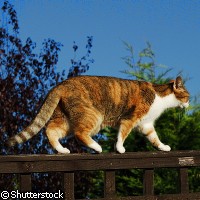How our four-legged friends put their best foot forward
We see four-legged animals (quadrupeds) every day. Cats and dogs trot past us all the time, and everyone admires the graceful movements of horses and deer. Most of us, though, never try to analyse how they walk. Which leg do they put forward first, and how do they manage to coordinate all four legs to propel themselves forward? A research team has now investigated the subject and uncovered the interesting fact that the motion of quadrupeds is routinely misrepresented in models and illustrations. The study, 'Erroneous quadruped walking depictions in natural history museums', has been published in the latest issue of the journal Current Biology. It shows that anatomists, taxidermists and toy designers wrongly illustrate the motion of horses and other quadruped animals about 50% of the time, even though the correct motion of quadrupeds was described and illustrated over 120 years ago! The research team investigated pictures of moving quadrupeds in museums and found that almost none were depicted with two feet lifted off the ground on the same side and at the same time. Even books written by veterinary experts and animal anatomists often wrongly depict quadruped movements. 'Our key finding is that the chance to find erroneous depictions of quadruped walking in our surrounding environment is about 50%, which corresponds to nothing else than pure accident,' said Dr Gábor Horváth of the University of Eötvös in Budapest. 'This was quite unexpected because the experts of animal locomotion have known well the characteristics of quadruped walking ever since the famous and pioneering work of Eadweard Muybridge, published in the 1880s.' In fact, quadrupeds walk by moving their left hind leg first, followed by their left foreleg. Then they repeat the same pattern with the right leg. All quadrupeds walk in the same pattern and differ only in the timing of their steps. The reason that their manner of walking is so universal, Dr Horváth said, is that it provides the maximum static stability. In other words, when walking slowly, a horse's or dog's body is supported at all times by three feet on the ground, which form a triangle. The closer their centre of mass is to the centre of those three points, the more stable they will be. Dr Horváth explained that much of the high error rate in the depiction of quadruped motion is due to carelessness, caused by people often copying other inaccurate illustrations. Thus incorrect depictions are passed down through each new generation of books, objects of fine art and anatomical material. In the case of children's toys, he said, such an error might not matter so much, but in natural history museums and anatomy textbooks scientific correctness should be a requirement.
Countries
Hungary



